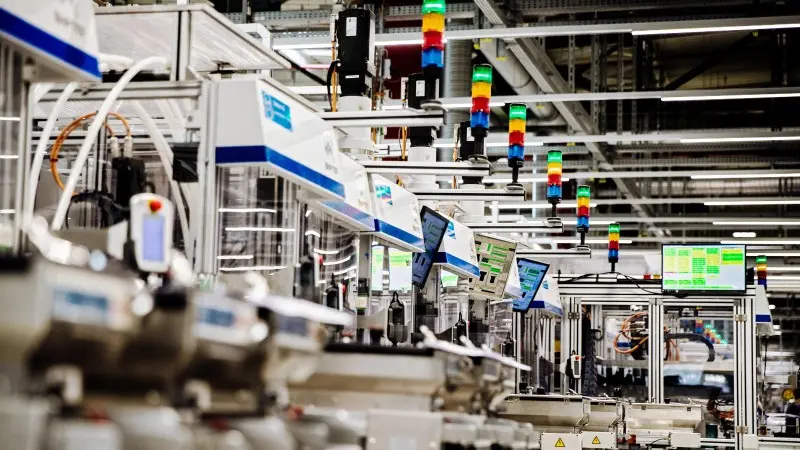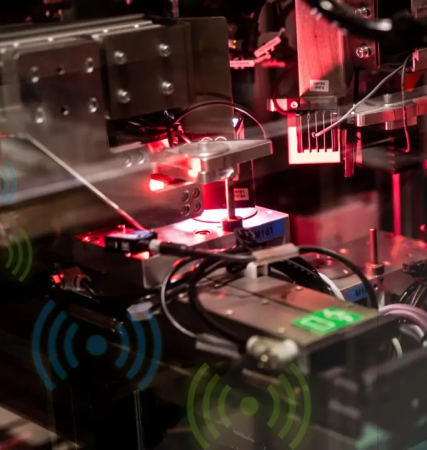Bosch Unlocks The Door To The ‘Factory Of The Future’
The products that roll off the production line at the Bosch plant in Blaichach, Germany help keep roads safe around the world. At this plant Bosch manufactures automotive technology such as ABS and ESP. It is up to Christoph Kunz and his coworkers to keep production running smoothly and ensure the components satisfy the highest quality standards. Smart software called Nexeed helps them get the job done.
Knowing What 60,000 Sensors See
An industry 4.0 software suite developed by Bosch Connected Industry reads out data from more than 60,000 sensors and delivers the relevant information to Kunz in real time. This makes predictive maintenance possible. For example, the data can indicate that a caulking tool on the assembly line will soon need to be serviced. This anticipatory response minimizes machine downtime. The Blaichach plant alone has reduced disruptions in its ESP manufacturing operations by a quarter.

Kunz can keep track of individual machines’ condition on his desktop computer, or on his tablet when he is on the move. He can even monitor all the manufacturing operations in one machine shop. These are just some of the ways in which smart software systems like Nexeed take manufacturing operation one step closer to the factory of the future.
One core component of the Nexeed software suite is the Industrial Application System. It interfaces with all connected manufacturing industry applications via a single uniform dashboard and user interface. This kind of connectivity requires painstaking programming — both to handle data sourced from so many machines and systems along the value chain, and to interpret the many formats and communication protocols across the supply chain.
A digital twin, a digital representation of physical assets such as machinery, collects and homogenizes this data. This uniform data is then easier to process, analyze, and share. Everyone wins — the companies that build the machines, the people who develop the software, and the engineers who operate and maintain the production lines. A simple example illustrates how this works. Let’s say a machine sends the following combination of numbers: 1 + 2019-09-25T08:15 + 23.8.

A digital twin then interprets this to generate an alert that reads something like this: “The coolant temperature at 8:15 a.m. on November 25, 2019, was 23.8°C, 3.8 degrees above the standard operating temperature of 20°C.” Nexeed has another great advantage: as an open system, it is easy to retrofit on legacy production lines. The retrofit serves to connect machines to the internet of things (IoT), or more accurately the industrial IoT (IIoT). All in all, the Nexeed Industrial Application System comprises 16 specialized applications and several standalone solutions. “Nexeed is the brains of our production facility. It makes processes transparent and tells our machinery what to do and when to do it.” states Christoph Kunz, section head for production scheduling at Bosch’s Blaichach plant.
The Factory of the Future
In the smart factory of the future, it will be easy to reconfigure machinery and to scale up or scale down production lines according to requirements. Power will be supplied by induction loops embedded in the factory floor, instead of by cable. Automated guided vehicles delivering parts, humans working at close quarters with robots, ultrafast 5G networks sharing data in real time — Nexeed is helping pave the way to all this and more. Today, it is already capable of assigning any order to the right machinery.
It automatically programs the designated production line with the required data, which then processes each job order accordingly. The production data this generates is presented clearly and is accessible at all times, which means that manufacturing operations can be precisely evaluated and improved. The statistics back this up: individual Bosch locations have boosted productivity by up to 25 percent and reduced inventories by as much as 30 percent.
For more information: www.bosch-connected-industry.com



